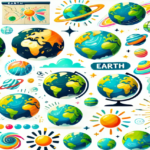Mushrooms are a fascinating subject for artists, thanks to their diverse shapes, textures, and unique natural forms. Whether you’re new to drawing or a seasoned artist, sketching mushrooms offers a blend of technical challenge and creative freedom. In this article, we’ll dive deep into the world of drawing mushrooms, covering essential techniques, tips, and inspiration for your mushroom art.
Understanding the Appeal of Mushroom Drawing
Mushrooms have always held a mystical and mysterious allure. Their varied appearances—from the classic toadstool to exotic species—make them a favorite subject in art, especially in nature sketches and fantasy illustrations. With their umbrella-like caps, intricate gills, and delicate stems, mushrooms offer rich textures and patterns that can transform even a simple drawing into something extraordinary.
The Symbolism of Mushrooms in Art
Before jumping into the technical aspects, it’s worth noting that mushrooms have a long history in art and symbolism. In various cultures, they represent everything from magic and mystery to rebirth and the cycle of life. The concept of mushrooms as symbols of transformation and the unknown has made them a recurring motif in fantasy art, surrealism, and even modern environmental designs.
This means that when you sit down to draw a mushroom, you’re engaging with more than just a botanical object—you’re connecting to centuries of cultural meaning, making your drawing rich in both technique and narrative.
Getting Started with Mushroom Drawing
Before we begin sketching, it’s important to gather the right tools and understand some foundational drawing techniques.
Essential Drawing Supplies
To draw mushrooms effectively, you don’t need a huge assortment of supplies, but having the right ones will elevate your work. Here’s a simple list:
- Sketchbook or drawing paper: Choose a medium that you are comfortable with. A medium-weight paper that can handle shading is ideal.
- Pencils: Start with a range of pencils—2B for sketching, 4B for shading, and H for finer lines.
- Eraser: A kneaded eraser is perfect for lifting off graphite without damaging your paper.
- Blending tools: Use a blending stump or a piece of tissue to smooth out shading.
- Colored pencils or markers: If you want to add color, go for colored pencils or alcohol-based markers to bring your mushrooms to life.
Studying Mushroom Anatomy
Mushrooms might look simple, but their anatomy is surprisingly complex. Understanding the basic parts of a mushroom will help you create more accurate and detailed drawings. Here are the main components to focus on:
- Cap (Pileus): The top, umbrella-like part of the mushroom, which comes in various shapes, from flat to convex or even funnel-like.
- Gills (Lamellae): Located underneath the cap, the gills often radiate from the stem and vary in density and thickness. They can be tricky to draw but add a lot of detail to your mushroom.
- Stem (Stipe): The stem supports the cap and can be slender or thick. It might also have a ring, or annulus, where the cap attaches during the mushroom’s growth.
- Volva: A cup-like structure at the base of some mushrooms, particularly in species like the Amanita.
Step-by-Step Guide to Drawing a Mushroom
Step 1: Basic Outline
Start with a simple pencil outline. Begin by drawing the general shape of the mushroom’s cap. If you’re drawing a classic toadstool, sketch a rounded cap, slightly wider at the bottom than the top. Don’t worry about adding too much detail yet—this is just a guide.
Next, draw the stem. The stem should taper slightly as it moves upwards. Ensure the cap and stem are proportionate, as this will keep your drawing realistic.
Step 2: Adding the Gills
Once you’ve outlined the cap, it’s time to add the gills. Gills are the lines or segments you see under the mushroom cap. To draw these, gently sketch curved lines from the stem outward. Start from the middle and radiate toward the edge of the cap. The gills should be closely spaced and vary in length.
For a simpler mushroom, like a button mushroom, you might opt for a smooth underside without gills, depending on the species you’re referencing.
Step 3: Shading and Texture
Now, the magic happens! Shading adds depth and dimension to your drawing. Begin by shading the underside of the cap where the gills are. Use a softer pencil, like a 4B, to create gentle gradients of light and dark, paying attention to how the light source falls on your mushroom.
Shading the stem is equally important. Add a light shadow on one side of the stem to give it a three-dimensional look. You can also add texture to the stem by gently cross-hatching or stippling.
For the cap, apply soft shading to indicate its roundness. If your mushroom has unique textures like spots or scales (common in species like the Amanita muscaria), lightly sketch these in and shade around them to make them pop.
Step 4: Background and Environment
Adding a background can enhance your mushroom drawing by providing context and atmosphere. You can sketch grass, fallen leaves, or even other mushrooms to build a small forest floor scene. Adding environmental elements not only frames your mushroom but also helps create a narrative for your drawing.
If you want to focus solely on the mushroom, a simple background of soft shading or a gradient can keep the attention on the main subject.
Exploring Different Types of Mushrooms in Art
Mushrooms come in thousands of varieties, each with distinct characteristics. Below are some popular species you can explore in your drawings, each offering its own challenge and beauty.
Common Toadstool (Amanita muscaria)
This is perhaps the most iconic mushroom in art, known for its bright red cap with white spots. It’s often associated with fairy tales, making it a favorite in fantasy artwork.
- Tips for drawing: Focus on the speckled texture and vibrant color. The gills are usually very prominent, making shading crucial.
Morel Mushrooms
Morels have a unique honeycomb-like texture on their cap, making them a fun yet challenging mushroom to draw. These mushrooms are often associated with springtime and are a common sight in forager artwork.
- Tips for drawing: Emphasize the detailed texture of the cap by using cross-hatching or stippling techniques. Pay attention to the irregular shape of the cap, which often looks crinkled.
Puffball Mushrooms
These round mushrooms are smooth and often feature in minimalist or abstract art due to their simple form. When ripe, puffballs release a cloud of spores, which can add a dynamic element to your drawing.
- Tips for drawing: Focus on the soft roundness of the mushroom and the subtle shading required to make it appear three-dimensional. You can also experiment with illustrating the spore release for a more dynamic effect.
Shelf Mushrooms (Bracket Fungi)
Often found growing on trees, shelf mushrooms are characterized by their layered, shelf-like appearance. They vary in color and can create stunning visual effects, especially when drawn in a natural setting.
- Tips for drawing: Pay attention to the layered, ridged structure of these mushrooms. Use shading to emphasize the different layers and their texture.
Adding Color to Your Mushroom Drawings
While black-and-white sketches of mushrooms can be incredibly striking, adding color can elevate your drawing even further. Here’s how to approach coloring your mushrooms:
- Start with light layers: If using colored pencils, begin with light layers, building up the color gradually. This helps avoid harsh lines and allows for smoother blending.
- Use reference photos: Real-life mushrooms come in all sorts of colors, from the bright reds and yellows of the Amanita muscaria to the earthy browns and greens of more common species. A reference photo can help you capture the true colors of your subject.
- Experiment with backgrounds: In addition to the mushroom itself, consider adding background colors. A forest floor with dappled sunlight or a misty woodland scene can enhance the atmosphere of your drawing.
Mushroom Drawing: Creative Approaches and Inspiration
Drawing mushrooms doesn’t have to be a strict exercise in realism. You can explore various creative approaches to make your art unique:
Fantasy Mushroom Art
Mushrooms are often featured in fantasy landscapes, particularly in otherworldly forests. By exaggerating their features—oversized caps, glowing gills, or unexpected colors—you can create mushrooms that feel magical and surreal.
Mushroom Mandalas
For a more abstract approach, consider incorporating mushrooms into mandala art. Their radial symmetry can serve as a perfect centerpiece for mandala designs, mixing the organic with the geometric.
Botanical Illustrations
If you prefer a scientific approach, try your hand at botanical illustration. This style focuses on accuracy and detail, often accompanied by labels and notes. Botanical illustrations of mushrooms can be a beautiful way to combine art with education.
Conclusion
Drawing mushrooms offers endless possibilities, from simple sketching exercises to elaborate, full-color artworks. Whether you’re fascinated by their biology or drawn to their symbolic meaning, mushrooms are an inspiring subject for artists of all levels. By understanding their anatomy, mastering shading techniques, and exploring different species and styles, you can create mushroom drawings that capture the beauty and mystery of these incredible fungi.








